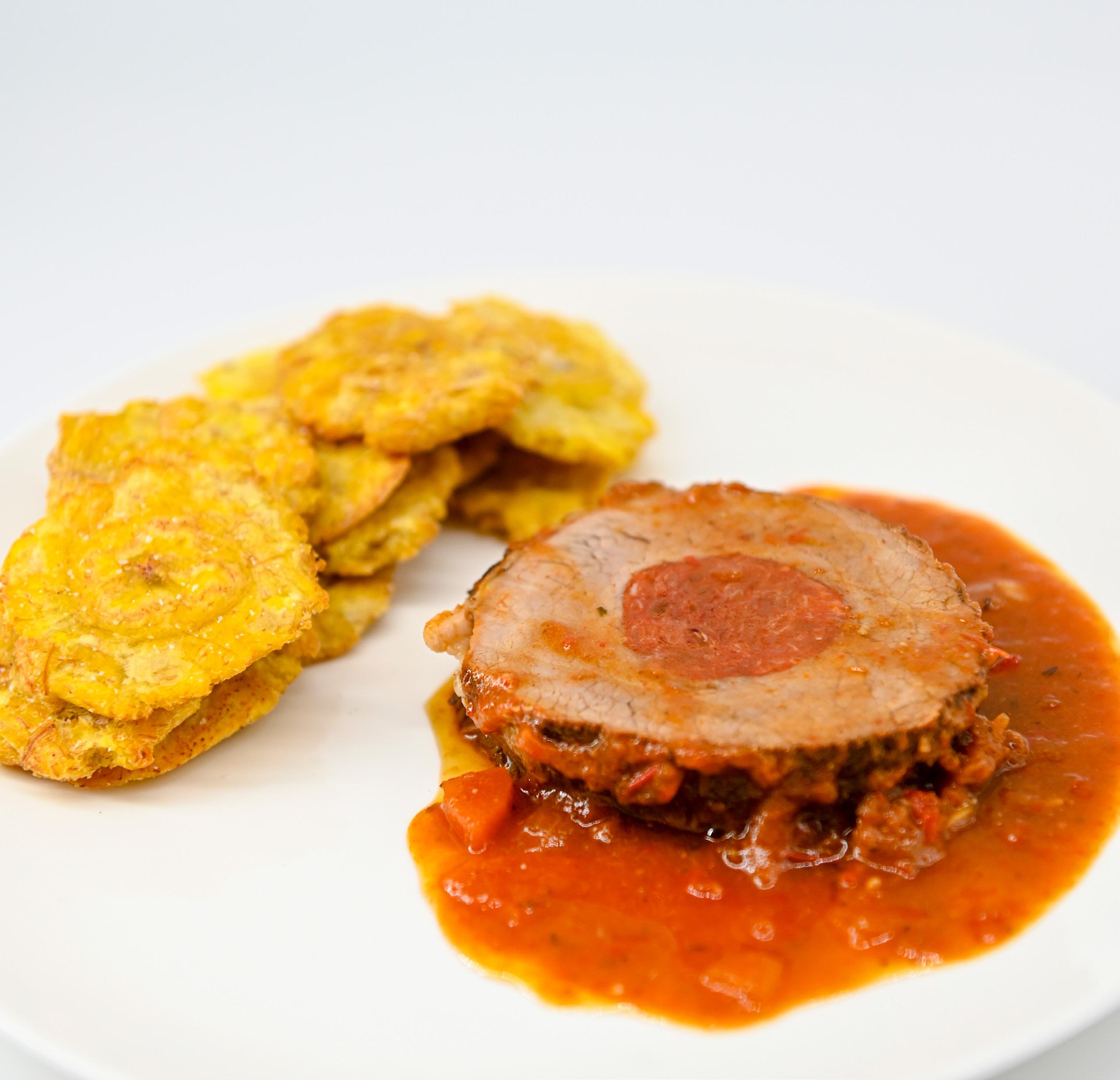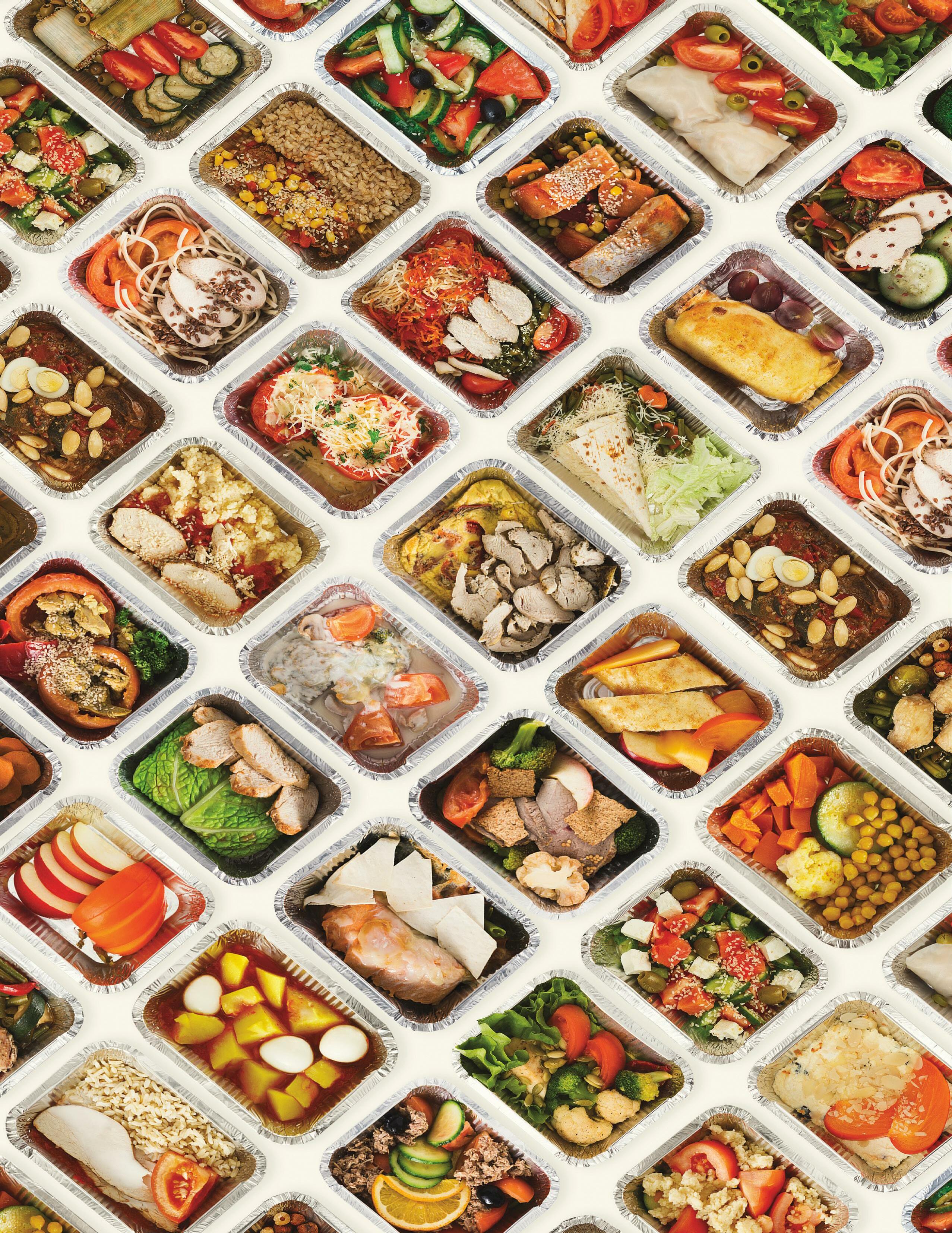
9 minute read
On the Side
from National Culinary Federation (Jan/Feb 2021)
by National Culinary Review (an American Culinary Federation publication)
HOT POTATO!
How to make the most out of these versatile and tasty tubers in this costconscious time // By Liz Barrett Foster
Versatile, affordable and long-lasting, crowd-pleasing potatoes are everything you could ask for in an ingredient. Whether you’re creating savory garlic mashed potatoes, gnocchi, latkes or Asian curry, potatoes work in almost any cuisine, and chefs who may have used rice or other grains as a base in the past now are taking a closer look at them.
Versatile and Profitable
Very few ingredients rank as highly as the humble potato in the categories of affordability, versatility and profitability. “The long shelf life of potatoes also helps reduce waste — especially useful with the cyclical, up-and-down nature of business right now,” says Alan Kahn, vice president of foodservice for the Idaho Potato Commission.

Above: potato and poblano quesadilla. Opposite: potato puff pizza (both courtesy of the Idaho Potato Commission).
With the continuing popularity of breakfast, brunch and eating local — even in the midst of a pandemic — chefs are becoming more conscious of ways to fill the plate with flavor and color while decreasing cost and allowing for cross-utilization of product, according to Chef Jeffrey Quasha, CEC, CCA, ACE, corporate executive R&D chef for Sandy Springs, Georgia-based Morrison Healthcare.
Chef Quasha says by simply adding a few starchy potatoes to their kitchens, chefs have access to crispy garnishes, hashes for breakfast, a seasonal soup option and potato appetizers. The potato is a perfect vehicle for chefs to use to create a masterpiece, he adds. “From goat-cheese-and-chive potato cakes stuffed with smoked salmon, to smoked sweet potatoes and kale drizzled with Shropshire blue cheese, charred balsamic onions and fresh herbs, potatoes are cheese’s best friend,” he says. Whether the dish is four-cheese scalloped potatoes or a classic baked potato topped with melty cheddar, potatoes and cheese have been natural partners for ages. He adds that one of his favorite potato dishes is mashed potatoes with creamy brie folded in, garnished with crème fraiche and scallions.
Because the past year has resulted in a restaurant takeout and delivery boom, “We’re sending the message that a variety of potato dishes and sides can be profitable, innovative and portable,” Kahn says.
Potato Mashups
Global fusion cuisine has helped stir up a potato revival over the past few years, according to Chef Quasha. Potatoes, after all, are an inexpensive way to introduce new or unique flavor profiles to consumers. In addition to traditional potato applications, Chef Quasha says he’s noticed potatoes used in a growing number of international menu applications in places such as food halls and food trucks.
Some examples he points to include poutine combined with bulgogi short ribs and sautéed kimchi, and ethnic potato dishes like potato knishes, Czech dumplings, breakfast hash, and pierogis that feature global flavor profiles and elevated fillers. “My new obsessions are elote fries, Old Bay-dusted handcrafted potato chips, and pickle-brined French fries,” he says. “Most recently, my favorite applications have been classic Indian curries, Japanese curries, and dal, made using purple, golden and Red Bliss potatoes.”
Whether you’re creating a comforting cheese-layered gratin, a potato-topped pizza Genovese, seasoned potato wedges, or a simple, crisp-skinned baked russet, keeping a bag of potatoes nearby is essential for many quick, inexpensive, impressive and takeout-ready dishes. For recipes, visit WeAreChefs.com.

Digital. Secure. Verified.
As the premier certifying body for cooks and chefs in America, The American Culinary Federation remains committed to providing you with the tools to achieve your professional goals. We are pleased to announce the launch of a new way to communicate the ACF credentials you have earned in the ever-expanding online marketplace — at no cost to you!

CHEF ANA LEBRÓN, CEC
Chef-Owner, Linea Gourmet Catering Services CEO and President, Correre, Srl
By Amelia Levin
Chef Ana Lebrón turned heads when she and her team took home a gold medal at last year’s IKA Culinary Olympics in Stuttgart, Germany. “This win is not from Ana Lebrón,” she told the media at the time. “It belongs to the country that saw me born and allowed me to channel my interest in the highest-level professional cuisine. It belongs to all Dominicans who believe in my talent. It also belongs to my teachers in the restaurants of the world.”
As the first chef from the Dominican Republic to achieve such victory, the journey to gold was a tough one, but Chef Lebrón — who is also the founder and current president of ACF Chapter República Dominicana — has never shied away from a challenge. And over the course of her life and career, she has had to overcome a few.
THE MAKING OF A FIERCE COMPETITOR

Though Chef Lebrón has clocked more than 25 years in the culinary profession, her love of cooking goes back even further — to when she was a child, making pasta in her Italian grandmother’s kitchen.
“Every time my grandma was making gnocchi, I liked to be with her — it was like playing with clay,” she recalls. “Throughout the years, as I grew up, whenever there was a party [or] during the holidays, I was always in the kitchen. But I knew if I wanted to work in this field professionally, I would have to learn it by the book.”
Chef Lebrón went on to receive her hospitality bachelor’s degree in 1989 from Pontificia Universidad Católica Madre y Maestra, a Dominican Republic-based Cornell University affiliate program. She then interned and worked in the kitchens of five-star hotels (including for chains such as Sheraton and Sofitel) in Brussels, Germany, and Milan.
It was in Italy where she met her husband, and together they moved back to the Dominican Republic. She officially opened her catering and private chef business, Linea Gourmet, in 2002. Sadly, her husband passed away that time, when her daughter was just three years old, which meant she had to navigate raising a child as a single mother while running her own business.
In typical Chef Lebrón fashion, that challenge didn’t slow her down. She went on to build a substantial client base over the last 12 years, including high-profile companies like Microsoft and World Bank. She has also served as a consulting chef for foodservice brands, including a rice company, and has worked with the Dominican Republic Ministry of Tourism. In addition, Chef Lebrón has written and spoken extensively about gastronomy and the culinary arts.
GETTING TO GOLD
Over the course of her career, Chef Lebrón traveled regularly to ACF events in the U.S., where she met board members and other active chefs who would help her in her career.
“I wasn’t shy — I told the current ACF president I was interested in starting an ACF chapter in the Dominican Republic to increase our knowledge and skills here, and promised to commit myself to that,” Lebrón says. “I did everything the ACF asked me to do, and didn’t sleep on it — I moved quickly.” The chapter, founded in 2015, now has 15 members.
In 2012, competing became her bread and butter. She recruited and

trained a group of young chefs in the Dominican Republic who would go on to take top honors at an international culinary competition in Costa Rica two years in a row and, later, earn that gold medal at the Culinary Olympics.
Chef Lebrón credits four highly acclaimed ACF chefs who mentored her and her team for the past eight years, and for helping establish the Dominican Republic chapter: Chefs Louis Perrote, CEC, AAC; Victor Sommo; Stafford DeCambra, CEC, CCE, CCA, AAC; and George Castañeda, CEC. She points to Chef Castañeda for helping bring her goldwinning team to Germany. “Normally, it takes at least two years to practice for the competition, but we put together our program in just three months,” Chef Lebrón says, nothing she stepped away from other responsibilities so she could devote all her time to practice. “We were just repeating and repeating and remaking dishes all the time until we mastered the techniques.”
One of the team’s most successful dishes on the competition menu was a modern interpretation of sancocho, a traditional beef and root vegetable stew, in this case made as a clarified broth with seven types of meats, along with pumpkin, rice, corn, root vegetables and plantain chips. For the salad, Chef Lebrón and her team prepared a colorful terrine of hearts of palm and avocado, served with celery ribbons, baby greens, toasted macadamia nuts and citrus olive oil.
For the fish course, Chef Lebrón took inspiration from an ancestral fish-andcoconut dish, preparing poached red snapper, Caribbean shrimp roulade, charred pepper with Dominican farm cheese, chenchén (Dominican cracked-corn pilaf) and a coconut-cilantro shrimp sauce. The meat dish was Brangus beef tenderloin with veal mousseline, wild mushrooms and deconstructed mondongo (beef tripe and vegetable soup), with tongue wrapped in brioche alongside a tomato ragout and artichokes with wild oregano hollandaise. Dessert was a play on coconut cremoux with gelled mango, chinola (passionfruit) ganache, citrus sorbet and candy made with guava, white chocolate and fresh mango, to represent the various fruits of the region.
“When we came back, we were planning to host a big party to celebrate with our colleagues, and invite the media, but within two weeks, COVID-19 happened and everything closed,” she says. Like so many chefs in the industry, Chef Lebrón had to pivot her business model quickly to pay her staff and the bills, through new tactics like preparing lunch boxes for Microsoft employees who were now working from home. Times are still tough, of course, but Chef Lebrón says she refuses to stay idle.
Instead, she’s been keeping busy by preparing for the next competition — she also is the only Certified Judge in the Dominican Republic for worldwide competitions sanctioned by the World Association of Chefs’ Societies and the ACF — as well as remaining in close contact with her chapter members and finding ways to educate the community.
She has also been working with the local government and tourism department to raise funds to support ACF certification for cooks in the area, which would help them find jobs and elevate their careers. In the meantime, she has established a training program for local chefs, tackling everything from ServSafe, COVID-19 safety protocols, and nutrition, through small, socially distanced, masked gatherings in large banquet spaces. Chapter members have also gotten together to prepare meals for residents of a local nursing home.
“I have to keep busy, or I’ll go crazy,” she says. “People who like to compete … want to [compete] all the time, so that’s what I have been doing, and we are having fun. We are focused on presenting the gastronomy of our country. One of my ideas is to present Dominican Republic cuisine in one bite.”
Having passed the practical portion of the Certified Executive Chef exam, Chef Lebrón also hopes to travel to the U.S. to complete the written portion of the exam when it’s safe to do so.
Ever-cheerful, Chef Lebrón says she’s “trying to stay calm and positive” even as the future remains uncertain. After all, that’s the Dominican way.
Left: Chef Ana Lebron inspecting her kitchen as she prepares for reopening after COVID-19 shutdowns. Right: ACF Dominican Republic's modern ceviche presented during the 2020 IKA Culinary Olympics in Germany.









